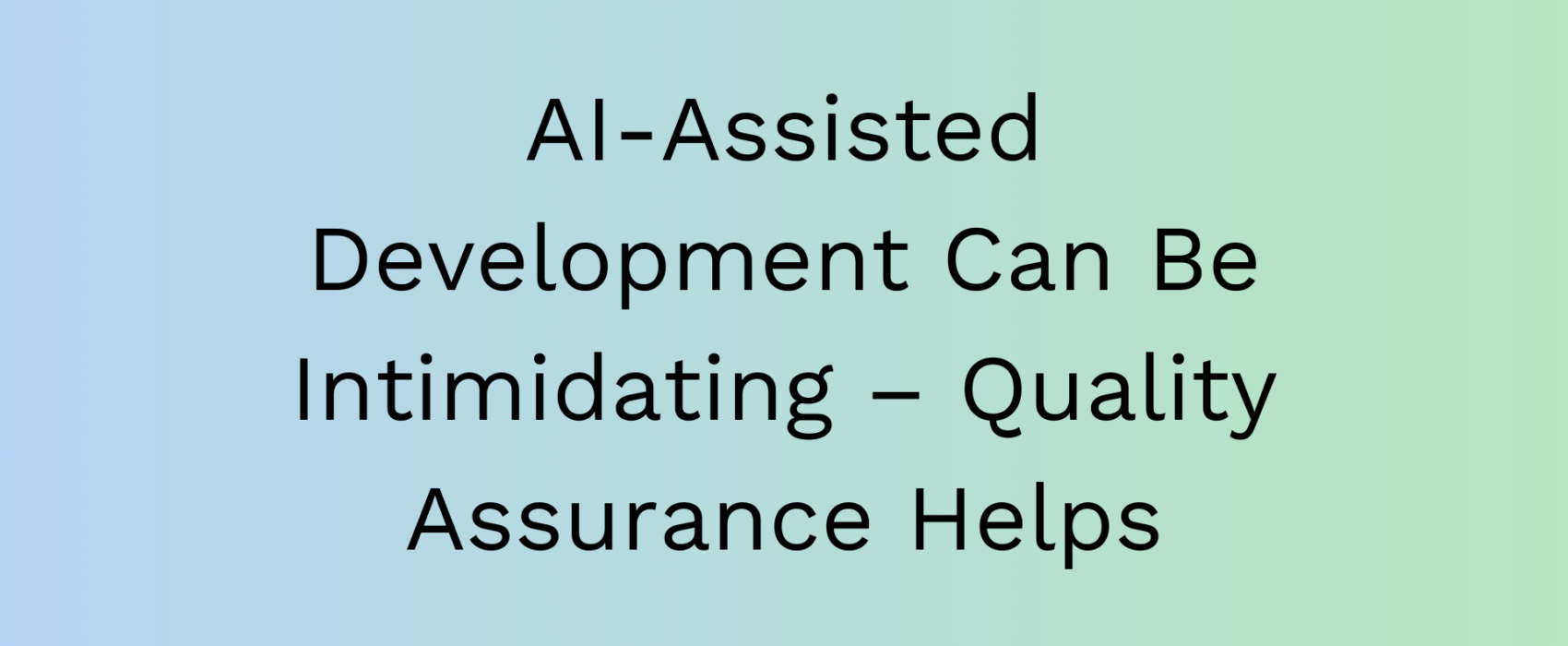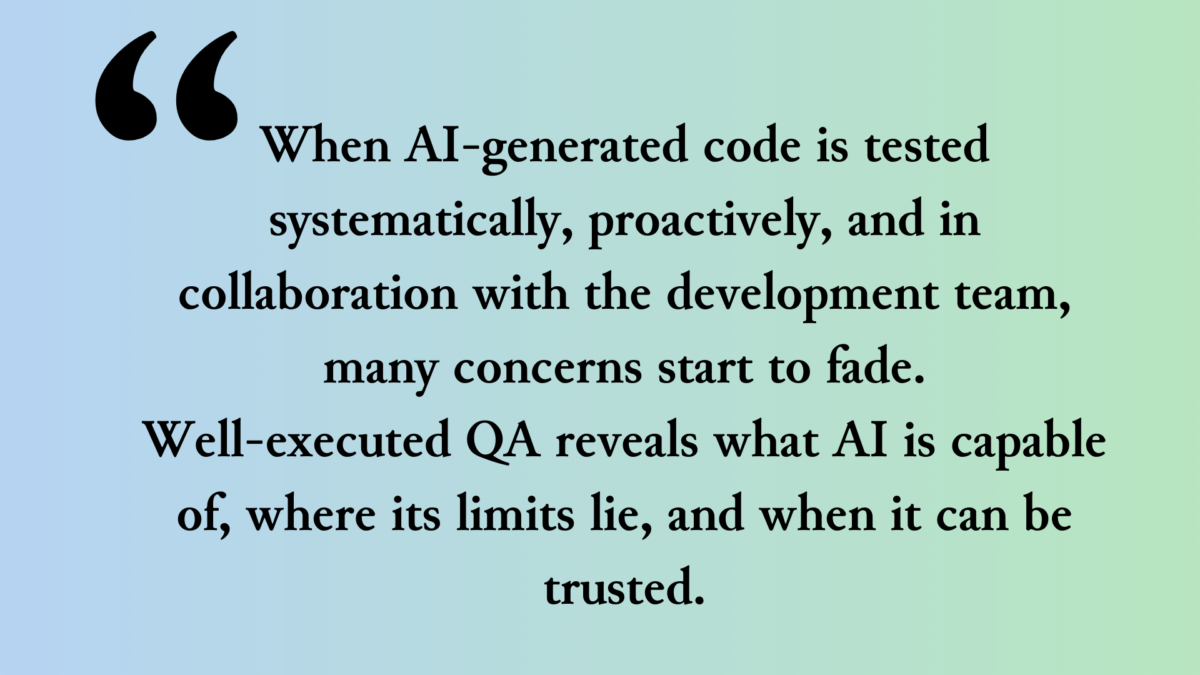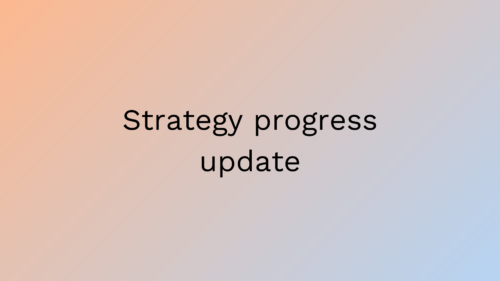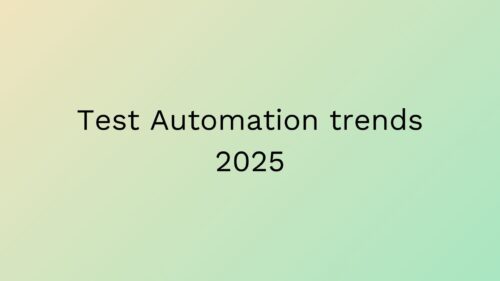AI-Assisted Development Can Be Intimidating – Quality Assurance Helps
07.04.2025

Every organization developing software is currently thinking about how AI could improve efficiency, quality, or customer experience in software development. At the same time, many are also feeling anxious. Even when there’s interest, AI often isn’t properly adopted. The reason is usually not a lack of willingness, but rather concerns about data security, practical barriers, or uncertainty about how AI can be used in their specific context.
In certain public sector areas or heavily regulated industries like healthcare or banking, the security and transparency requirements around AI use are so strict that adoption feels especially intimidating. Sometimes, there’s a fear that AI might make a mistake that goes unnoticed. Or that it might make the “correct” decision, but no one can explain why.
In these situations, quality assurance (QA) can be the crucial missing piece that helps overcome fear and take those first steps—safely and with control.

QA Builds Trust
Quality assurance isn’t just about hunting for bugs and checking functionality—it’s primarily about managing risks and building trust. When AI-generated code is tested systematically, proactively, and in collaboration with the development team, many concerns start to fade.
Well-executed QA reveals what AI is capable of, where its limits lie, and when it can be trusted.
At VALA, we see our role as building a bridge with testing—one that helps teams move from seeing AI as something uncertain and unfamiliar to making it a natural part of software development.

This might mean, for example:
- assessing the quality of AI-generated code through both automated and manual testing,
- validating the coverage and relevance of AI-generated tests,
- or embedding checkpoints in the CI/CD pipeline where AI-assisted functionality is validated through regression tests and user scenarios.
Good QA can also spot when AI-produced code or test cases deviate from the team’s style guide or create maintainability issues.
Sometimes, the QA team can simulate real-world production scenarios where AI’s decisions are particularly critical, and evaluate how the system behaves under exceptional circumstances. In other cases, QA might compare human- and AI-generated solutions side by side to identify where the AI’s logic differs from what’s expected.
And when AI is used for generating tests or documentation, QA ensures the outcome isn’t just technically correct but also understandable and genuinely useful in the day-to-day work of the development team.
This way, AI doesn’t remain a black box—it becomes a truly beneficial and manageable tool in the team’s everyday development workflow. In all of this, QA acts as the safety net: helping you harness the benefits of AI—but never blindly.
Why VALA?
VALA is a pioneer in software testing, and as a subsidiary of Siili Solutions, we’re part of Finland’s leading expert organization in AI-assisted development.
We combine the best practices of modern quality assurance with a deep understanding of how AI really works—and what it needs to function safely.
We’ve helped dozens of clients build testing solutions that enable the safe and efficient use of AI. We know when to automate, what to test manually, and when and how AI should be part of testing.
And most importantly: we know how to build trust that AI works the way it should.
If you’re curious about AI but feeling unsure—we’re here to help.




